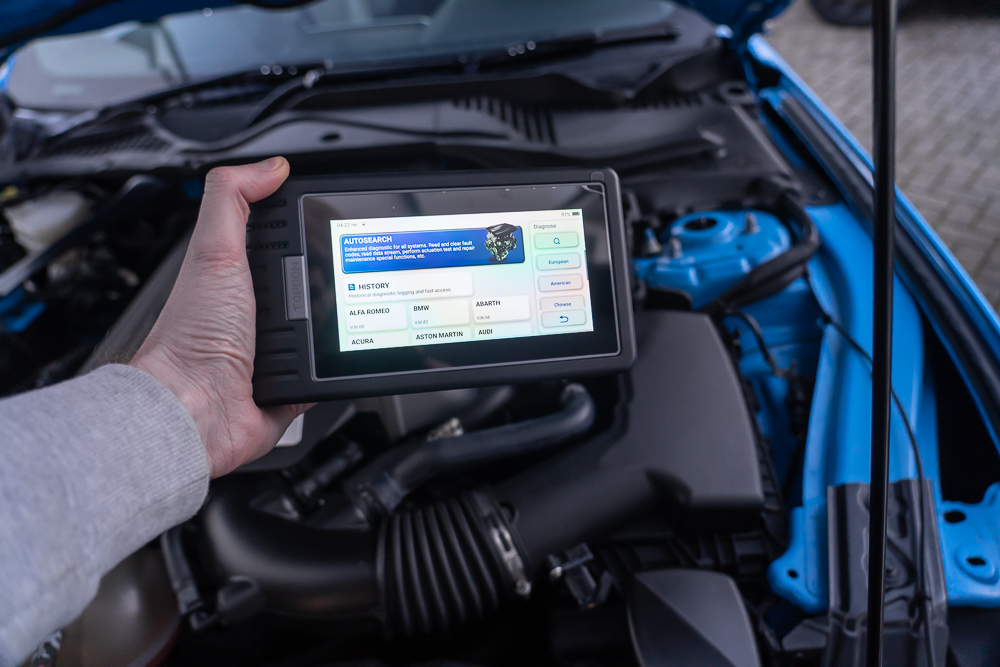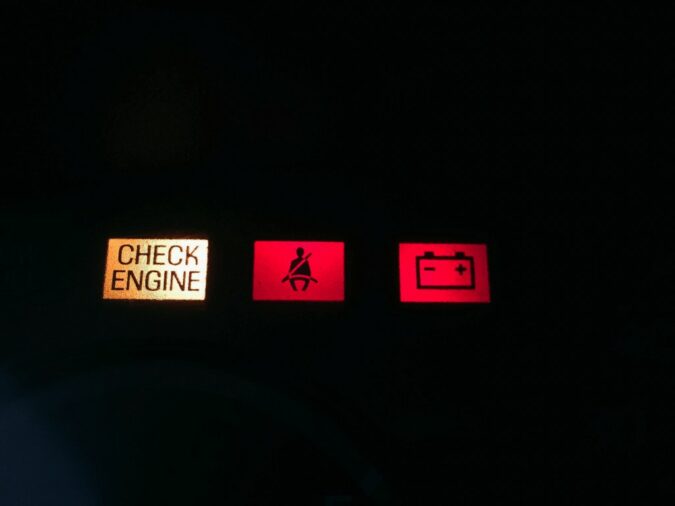Have you gotten the check engine light and the P0121 code? Well, if this is the case, then you are at the right place because there will be a lot to cover on this topic where we will learn everything when it comes to this issue.
Having a problem like this with your throttle can be a real pain to deal with. Why is this the case? Well, because the throttle is really sensitive and basically allows your car to move forward. Without the proper working order of the throttle body and its sensors, this operation cannot be regulated.
So, you might face some serious symptoms that are much worse than a simple OBD2 code like the P0121. This is why you need to put up your sleeves and start troubleshooting the matter. You need to start learning all the causes as well as the symptoms concerning this problem code and then come to a conclusion of what could be wrong with your car. Only then, you will be able to diagnose the problem the right way and we are going to help you out.
First, we will cover the basics of car diagnostics and the tooling that you will need for this task. Then we will cover the P0121 code and understand its meaning and after we will discuss the causes, and symptoms and learn more about why is it appearing. Then after we learned all this we will move on to diagnose the problem and successfully take care of it. So, if you want to learn more, follow along.
P0121 Code
Now before we dive into the P0121 meaning, let’s first focus on the basics when it comes to car diagnostics. As you probably know, there are a lot of people who are reading this article and are not quite familiar with car diagnostics in general and don’t quite understand how this is done on a car. So, this chapter is dedicated to them. If you want you can jump to the next chapter where we elaborate more on the problem.
Now let’s learn what is car diagnostics. Modern car diagnostics is not something like back in the day when the mechanic was diagnosing a car based on the symptoms that the car produced. Modern car diagnostics is a lot more and a lot deeper than you can imagine.
Modern cars are all packed with sensors and other components that communicate with the PCM which is the powertrain control module.
This control module is basically the brain of the car and makes all the important decisions like testing different sensors such as in our case with the TPS sensor and then decides to throw a check engine light based on the data that it collects.
This check engine light by itself doesn’t tell a lot. So, you need to have a special tool also known as an OBD2 scanner to get access to this code. And move on from there. Another thing that you will need is a multimeter to bench test a sensor.
You don’t want to trust your gut and replace a good sensor that will cost you a ton of money. But let’s say you got the P0121 code, what this code means? Let’s elaborate more on that next.
P0121 Throttle Pedal Position Sensor Switch A Circuit Range Performance Problem
Now let’s get to business and learn more about the problem that you have. More precisely the P0121 code. What does this code mean in the first place?
Well, the simplest definition for this code is “P0121 Throttle Pedal Position Sensor Switch A Circuit Range Performance Problem”. But what does all this means?
Well, this means that you have a problem with the throttle body position sensor on your car. More precisely with the voltage on the sensor. The voltage that the computer is registering on Circuit A is below or above the recommended threshold.
In simple words, the computer has detected that the expected voltage from the sensor is too high or too low from the expected range. But what is the expected range for the voltage on this specific sensor?
Well, the PCM supplies a 5-volt reference signal as well as a ground connection. The expected range of voltage that the sensor should produce is between 0.95V at idle engine speed and up to 5V at full throttle.
So, if the computer detects that the throttle angle is too high or too low and the voltage is below 0.5 or more than 4.5V, it will trigger the P0121 code and the check engine light on the cluster.
So, when you have a problem like this it means that the TPS sensor has a problem with circuit A. Circuit A is usually the wire with the 5V power supply. So, this is the wire you are interested in this case with the P0121 code.
But more in-depth we are going to cover this in the following chapter where we will briefly discuss the throttle position sensor diagram.
Throttle Position Sensor Diagram
Now before we cover the causes for the P0121 code and the problem with the circuit. let’s cover the throttle position sensor diagram first and learn more about the basics of this component. This will help you when you will get your multimeter and start diagnosing stuff.
What is important for you is to know that this is a three-wire sensor. This means that on the connector there are three pins in total which make 3 circuits. Circuit A, Circuit B, and Circuit C.
There is a signal wire that goes to your PCM which is Circuit B. This is usually the middle wire. Then there is Circuit C which is the ground wire and lastly is Circuit A which is the 5V power wire that also comes from the PCM.
Then based on the sensor reading, the signal wire input moves the voltage range from 0.95V up to 5V. But more on this later on in the article when we will move on to diagnose the P0121 code. Now let’s cover the causes of the P0121 code and see what could be causing this issue.
Causes For The P0121 Code
As we cleared the diagram for the TPS sensor and the meaning of the P0121 code, now we can move on to other topics.
Namely, we would like to cover the causes for the P0121 Chevy Silverado. As you probably know, everything happens for a reason and so is the case with this code. We need to elaborate on these causes in detail so you get a better idea of how to overcome them. Now let’s begin.
1. An Intermittent Open Or A Short Connection Inside The TPS Sensor
The first common cause for this problem with the P0121 code is a short in the circuit of the sensor. As we already explained there are three circuits. So, in our case, Circuit A is not performing as it should.
This will create problems with this sensor and possibly cause the sensor to malfunction and get wrong readings.
What happens is that the circuit for the 5V supply line is shoring at some point and there are spikes in voltage or too low of a voltage if the circuit is interrupted. This will trigger an alarm for the PCM and will throw the P0121 Chevy Silverado code. This means that the sensor is faulty and needs to be replaced.
Remember the recommended voltage is between 0.95V and 5V. Now let’s move to the next cause.
2. Harness Is Rubbing And Is Creating An Open Or Short In The Wiring
The second most common cause for a problem like the P0121 Chevy code is a situation when you have a problem with the wiring harness of your car.
Wires in and around the engine are exposed to a ton of heat and they could easily end up melting. Once the insulator material melts, the two naked wires will come in contact.
And once two naked wires come into contact a short will happen. This situation is not good and you will get a P0121 Toyota code and a check engine light on the cluster.
So, whenever you get a code like this, it is advised that you inspect the wiring that goes from the TPS sensor to the PCM and see if some of the wires are melted or burnt. This way you can be sure that there is no problem with the wiring.
3. Bad TPS Sensor Connector
The third most common reason for the bad TPS sensor and the P0121 code is the problem with the connector of this sensor.
If you didn’t know, in order to get the right reading from this sensor, your connector needs to be a perfect fit. If you have a connector let’s say that wobbles around and is too loose. You might be having a hard time.
Mainly because when the car drives, it vibrates a lot, and the voltage of this sensor jumps around too much in some cases when the connector is too loose.
In these situations, you might want to replace the connector and fix the problem with the P0121 Toyota. Now let’s move to the next probable cause.
4. Corrosion Inside Of The Connector Or Sensor
The next thing that we would like to discuss when it comes to the causes of the P0121 GMC is the situation when you have corrosion inside of the connector and the connections become corroded.
A lot of people like to wash their engines frequently and when you do this, the water will enter the connectors and cause you trouble like this. Electrical components do not like water at all.
So, a rust development will be a frequent issue when it comes to washing the engine. It is better to get a microfiber towel and cleaning solution and avoid using a power washer because of these things.
So, in these situations, you might want to remove the connector and see if there is rust on them. If there is, then clean it off with a wire brush or sandpaper. If the rust is too excessive you might be needing to replace the whole connector or sensor to fix the P0121 code.
5. Bad Throttle Body
And the last cause that we would like to discuss when it comes to the P0121 code is a problem with the throttle body itself. This component can fail and cause issues like these in some cases.
This is the component to which this sensor is attached on. So, when the throttle body fails. There are a ton of codes and problems. You might want to troubleshoot the issue and check its condition of it. If it’s full of thick carbon deposits and the flap is not closing correctly, you might want to replace it completely.
Symptoms Of A Bad Throttle Position Sensor
Now let’s move on and focus more on the symptoms of a bad throttle position sensor and the P0121 code.
We will cover the symptoms of the throttle body sensor that are associated with the code that is most important for us. These symptoms actually are going to help you when it comes to overcoming this problem quickly and effectively. So, pay close attention and follow us carefully.
1. Check Engine Light
The first and most common symptom when it comes to the throttle body position sensor and its malfunction is probably the check engine light.
There are a few codes that might pop up but mainly the P0121 code is predominant because this is a problem with the Circuit A of the sensor. There are also other codes concerning Circuit A that you should know. These are the following, P0120, P0123, and P0124.
The P0120 indicates a general malfunction in circuit A, the P0123 indicates a high input in Circuit A, while the P0124 indicates intermittent short in Circuit A.
Overall, these are the codes that should be the top of your concern. Now let’s move on to the next symptoms of a bad throttle body position sensor.
2. Jerking And Poor Performance
The second in our list of symptoms of a bad throttle body position sensor and the P0121 code is the jerking and hesitation at some points when you press on the gas. But why is this happening?
Well, this is mainly caused by the bad sensor. This sensor produces bad values and there could be delays and other malfunctions when it comes to observing the position of the flap inside of the throttle body.
So, you can expect problems like these. The car could jerk all the time as well as deliver an overall poor performance. This is a clear example of a bad throttle body or a bad throttle body position sensor that you need to check. And if you have the P0121 code, you can see that you are having a bad TPS sensor.
3. Sluggish Acceleration
The third most common symptom associated with a bad TPS sensor and the P0121 code is the sluggish acceleration and overall poor performance of the engine.
When the sensor that is monitoring the movement of the flap is not working correctly and produces the wrong voltage, you can expect poor acceleration. Especially if it does not move more than 2 volts.
This will result in limited power output from the engine and you will basically be stuck in one position and no matter how you press on the gas pedal, the engine will simply not go any further. If you get the P0121 code, the doubts will become true and you can determine that you have a faulty TPS sensor.
4. Stalling Issues
The last symptom of the bad TPS and the P0121 that we are going to cover is the issue with stalling of the engine.
This issue will be most notable if the voltage that the sensor produces is below 0.95V. This means that if the voltage is lower than this, the engine will simply shut off because there will not be enough voltage to keep it idling.
This is why if your car immediately stalls after you start the engine, you should suspect that the stalling issue is because of the TPS sensor. But how you can diagnose a bad TPS sensor? Well, that’s what we are going to cover next.
How To Diagnose The P0121 Code?
Now let’s focus more on diagnosing the bad TPS sensor and the P0121 code. The first thing that you will have to do in this case is to grab an OBD2 scanner and scan the car for codes.
If you get a code like the P0121 it means that you have either a too low voltage or too high voltage. So, this indicates a short in the system.
The next thing you will need is to get a multimeter. In the video that we attached, you can see the location of circuit A. But you should find it by yourself based on the instructions.
Once you found circuit A, you will need to put some metal extensions into the connector and test it while the sensor is connected to the car. This process is called back probing. It will allow you to test the sensor while the sensor is mounted on the car. For this, you will need to get some alligator clips and then connect everything like in the video.
Then start the car, the idle voltage that the sensor should produce should be about 0.95V the more throttle you give, the voltage will increase up to 5V. So, if the voltage is below and above these limits it means that the sensor is broken and needs replacing. But how you can fix a P0121 code? Let’s find out next.
How To Fix Throttle Position Sensor
So, how to fix throttle position sensor? And also fix the P0121 code? Well, it is almost impossible to fix this sensor without replacing it. Still, there are some people who are repairing them, and more on this you can see in the following video.
https://www.youtube.com/watch?v=STWykKRWvVs
Still, we recommend replacing this sensor completely with a new unit, they are not that expensive after all and do not cost a ton of money. More on that in the following chapter.
Throttle Position Sensor Cost
So, what does the throttle position sensor cost? How much can you expect to pay for this work to fix the P0121 code?
Well, on average, the sensor costs between $75 to $100. The labor will also be about $100. Roughly somewhere between $180 and $250 will be the total costs involved in this replacement.
Conclusion To P0121
In this article, we have covered quite a bit when it comes to the P0121 code. First, we covered the basics of car diagnostics and the tools you will need to do this work on your car.
Then we covered the problem and then we covered the causes and the symptoms that you will face when you have an issue like this. Later on, we discussed how you can diagnose and fix the issue.
F.A.Q
Now let’s answer some frequently asked questions.
What Is Code P0121
This code represents a problem in your throttle body position sensor. More precisely Circuit A has abnormal voltage readings. More precisely out of the range of 0.95V and 5V. Anything above or below these readings will trigger this code.
What Does Code P0121 Mean
The basic meaning of this code is “Throttle Position Sensor/Switch A Circuit Range/Performance Problem”. This means that the voltage that this sensor measure is above or below the recommended values. The lowest recommended voltage is 0.95V while the top voltage should be no more than 5V. Anything that is not up to these specs will trigger this code.
What Causes A P0121 Code
Most often cause for this code is a faulty TPS sensor. The circuit inside of this sensor has shorted out and is causing abnormal readings. The connector and the wiring are also an option that is worth inspecting.
How Do I Fix Code P0121
Fixing this code is only possible by replacing the sensor if it is faulty. Or eventually fixing a wiring problem that you are having on your car that is causing these problems.
How To Test GM Accelerator Pedal Position Sensor
You can test the APPS sensor with a multimeter. Place one alligator clip on pin number 4 and one on pin number 6. Then turn the ohmmeter and an ideal measuring should be somewhere around .3 ohms. As you move the throttle pedal the readings should increase.




